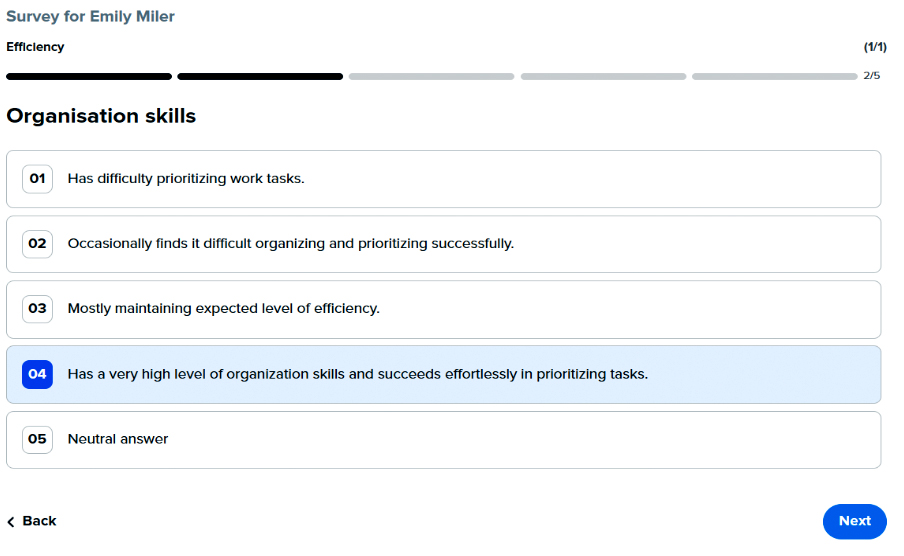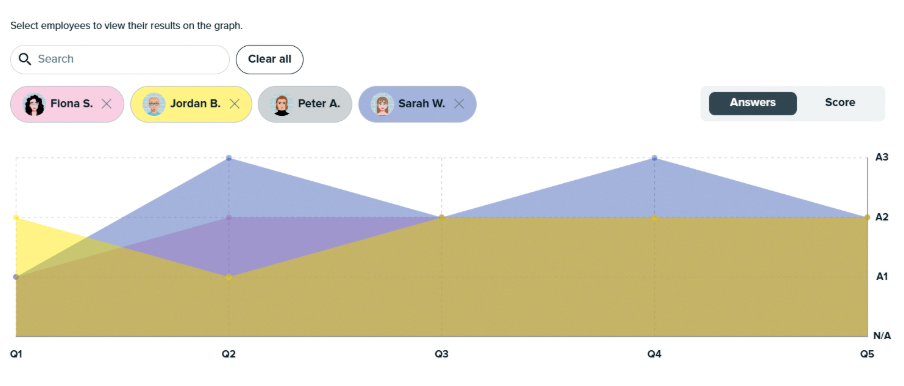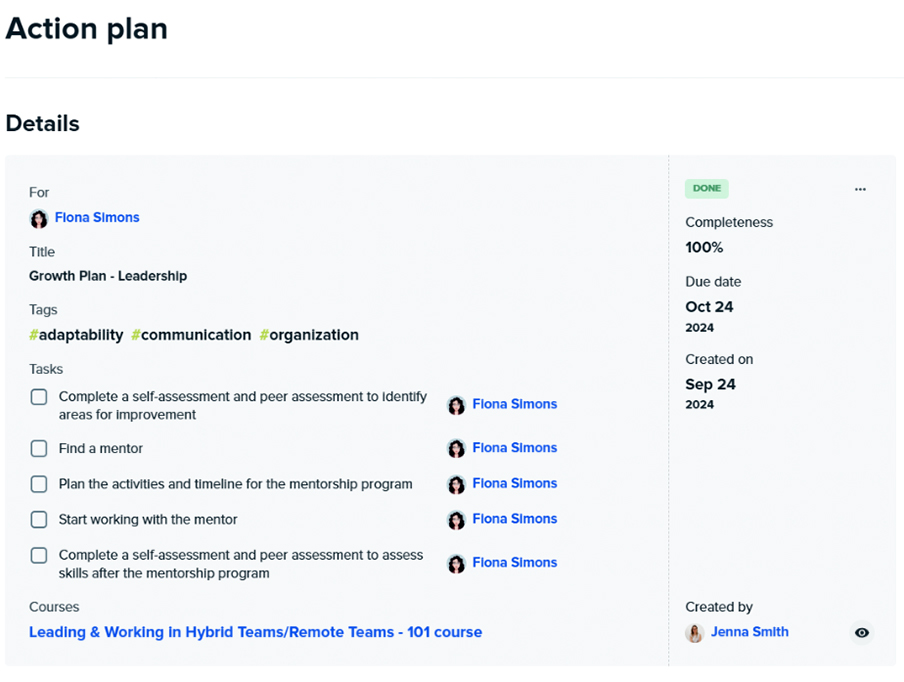Everyone agrees that performance reviews matter, but applying performance reviews best practices in real teams is a different story.
For most managers, the process of collecting and acting on employee feedback feels unclear: too vague to be useful, too rigid to adapt, or too disconnected from day-to-day work to make a difference. It often ends up being a routine performance evaluation, rather than a conversation that helps someone move forward.
There’s no one right way to do reviews. However, there are a few simple practices that make them more precise, consistent, and valuable, especially in tech teams where roles shift rapidly and feedback often gets lost along the way.
Performance reviews best practices that actually work
While no single blueprint fits every team, certain practices consistently emerge in companies that manage reviews effectively, particularly those navigating rapid growth, shifting responsibilities, and limited time for formal HR cycles.
Deloitte, for example, found that only 58% of their executives think their performance management system works. They replaced it with lightweight, quarterly check-ins focused on strengths and future goals, proving that even massive enterprises benefit from moving toward faster, more relevant, and more human-centered feedback systems.
Here are five practices that remain effective when everything else starts to break down.
1. Stop reviewing people, start reviewing alignment
The biggest mistake many teams make is treating performance reviews as a verdict. Did this person do a good job or not?
But most of the time, that’s not even the right question.
What matters more is whether the person knew what was expected, whether those expectations changed along the way, and whether their actual work reflected what the team needed. The goal isn’t to judge effort. It’s to determine whether the work aligns with what the team needs.
For example, someone might be doing solid work, but in a direction that no longer matches team priorities. A performance review that focuses only on output misses the point. But one that asks “Were we on the same page?” opens up a more useful conversation and a better chance to adjust in time.
The review becomes less about evaluating the person and more about making sure the context around them supports success.
💡 According to Gallup, only 14% of employees strongly agree that performance reviews inspire them to improve. When reviews feel like a judgment rather than a shared check-in, their motivational impact disappears, making it even harder to drive meaningful change.
2. Use more than one point of view
One person’s opinion is not a performance review. And yet, in many teams, the manager’s view is the only one that gets documented.
This creates two problems. First, it puts too much weight on one perspective, which can miss context, misread intent, or carry unconscious bias. Second, it limits the conversation. When employee feedback isn’t shared across different viewpoints, people don’t get the complete picture of how they’re showing up at work.
Reviews get better when they include self-assessment, peer input, and manager perspective — not as a formality, but as real signals. When someone sees that they rated themselves low on a skill while peers saw high impact, that’s a valuable moment. Not just for the person being reviewed, but for the manager who now has something concrete to work with.
The more honest and consistent the input, the more valuable the review becomes.
3. Write less. Talk more.
Among the most overlooked performance reviews best practices is making conversation central to the process, not secondary. Forms have their place, but they don’t replace conversation.
Too often, performance reviews turn into a written exercise: fill out a form, assign a number, move on. However, the real value lies in the exchange. People need space to ask questions, explain context, and clarify where things felt off.
This doesn’t mean adding long meetings to everyone’s calendars. It means carving out focused time to talk, even 20 minutes, and treating that time as the core of the review, not the afterthought.
Written input is useful, especially when it’s shared in advance. But without a conversation, it’s easy to misread tone, overlook nuance, or assume agreement when there isn’t any.
The review isn’t complete until people have had a chance to talk.
As Simon Sinek explains, “A good leader will want to receive feedback and create conditions in which it’s welcomed.”
Without that openness, feedback becomes performative. With it, it becomes a habit that builds trust and drives growth.
4. Make growth visible
Progress isn’t always tied to a new title or promotion. It often manifests in more subtle ways, such as taking on a type of problem that used to feel out of reach, helping a junior teammate find their footing, or stepping into a chaotic project and quietly making it manageable.
When performance reviews focus solely on outcomes or major milestones, this type of development tends to be overlooked. But recognizing it matters. Without that recognition, even the most committed individuals can lose motivation, unsure whether their efforts are noticed or valued.
To make progress visible, reviews need more than vague praise. A clear skill framework or leveling system helps translate day-to-day effort into something tangible and measurable. It creates a shared language for saying: “Here’s how far you’ve come, and here’s where you can go next.”
When that structure exists and people can see how their growth builds over time, reviews stop being status checks and become a tool for long-term momentum.
5. Don’t rate people. Track progress.
Rating scales often feel like a shortcut. A way to summarize performance in a number or label. But in practice, they rarely help anyone. Managers struggle to choose between a “3” and a “4.” Employees don’t always understand what the rating means. And when there’s no apparent difference between levels, scores become noise instead of guidance.
The real issue is that ratings flatten nuance. They reduce growth, adaptability, and team contribution into a single value, detached from the complexity of someone’s actual work. In tech roles, mainly, where impact often depends on context, this kind of oversimplification does more harm than good.
A more effective approach is to track changes over time. How has the person evolved since the last review? What kinds of problems are they solving now that they weren’t six months ago? Are they taking on different responsibilities, mentoring others, or working more independently? These signals say far more about performance and potential than a number ever could.
💡 According to SelectSoftware Reviews, organizations that prioritize continuous feedback report 24% higher business performance and 44% better employee retention. Reviews that focus on real growth over time, rather than flattening performance into a rating, are more likely to drive engagement and results.
What to stop doing (even if it’s standard practice)
Some habits are so common in performance reviews that they almost feel required. But just because something’s standard doesn’t mean it’s helpful.
Reusing the same forms without context
Many teams continue to use the same templates year after year. The structure stays the same, even if the team’s priorities, roles, or expectations have shifted. People end up answering questions that don’t apply to their current work, and managers are left trying to fit honest feedback into boxes that no longer make sense.
Ending the process with the meeting
Without a clear follow-up, reviews lose momentum. Conversations happen, but there’s no visible next step. No action plan, no checkpoint, and no sign that anything will change. Over time, people stop expecting impact from the process and start treating it like a routine task.
Ignoring conflicting signals
When a manager sees growth, but peers raise concerns, or when someone’s self-assessment doesn’t match the rest of the input, it’s tempting to smooth things over. But those mismatches are precisely where the most valuable conversations begin. Ignoring them means missing a chance to learn something fundamental about the individual and the team.
How Kadar helps you apply these practices
Let’s say you’ve committed to doing reviews differently this time, less guessing, more clarity. You want people to reflect honestly, compare perspectives, and leave the meeting with direction. However, once the surveys are sent out, the same challenges resurface.
One manager spends hours collecting feedback from Slack threads. Another tries to rebuild a form they used last year, but no one remembers what it measured. Someone runs a review, and two weeks later, no one can say what changed.
Kadar helps teams avoid this by simplifying what matters most: structure, clarity, and practical guidance when you need it.
- Survey examples are based on common review topics, so teams can start without staring at a blank screen.

- Inputs from self, peers, and managers are visible in one place, making it easier to spot blind spots and misalignments.

- Every outcome leads somewhere: into an action plan, a skills focus, a 1:1 topic, whatever helps keep growth moving.

And because progress is tracked over time, managers don’t have to rely on memory or gut feeling. They can see what’s changed, what’s improved, and what’s still unclear across cycles, not just once a year.
And you’re never on your own. Kadar’s team is there to guide you before, during, and after implementation, so the process never stalls just because someone has a question.
This doesn’t mean running a perfect process. It just means using a system that’s built to support the way real teams work.
Time to rethink performance reviews in your team
Performance reviews don’t have to be vague, slow, or disconnected from day-to-day work. When done well, they bring clarity, not just about how someone’s doing, but about what should happen next.
The performance reviews best practices aren’t theoretical. They’re simple habits that help teams reflect honestly, compare perspectives, and make better decisions consistently, not just once a year.
If your current performance evaluation process feels scattered or stagnant, Kadar provides a more precise starting point. Clear examples, smart structure, and real support when it matters most.
Try Kadar for FREE and see what changes when progress is visible.





